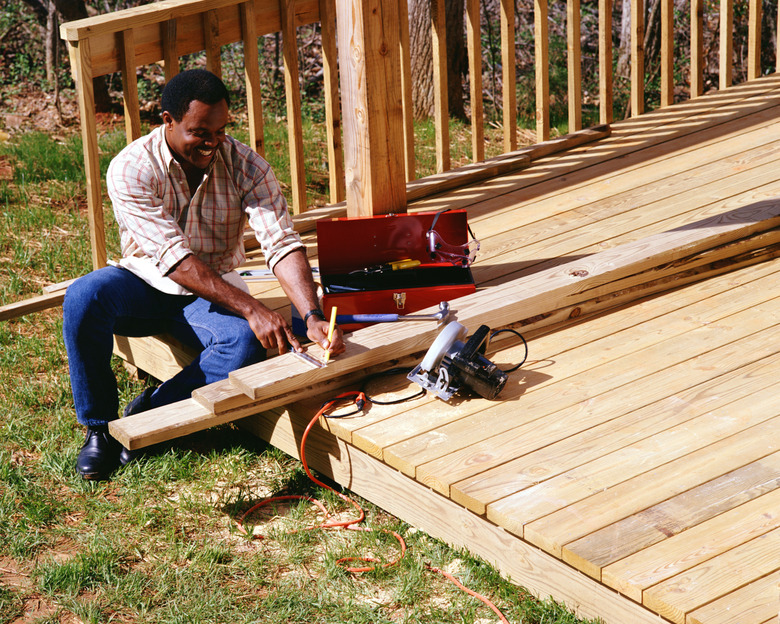Do I Need To Use Conduit Under A Deck?
We may receive a commission on purchases made from links.
Whether beneath a deck or at another exterior location, installing outdoor electrical cable exposes electrical cable to moisture. Outdoor wiring regulations specify how to protect wires from moisture, including where to encase cables in conduit. Codes largely base requirements on whether the cable is underground or above grade. Since both circumstances might occur under your deck, you should review general outdoor wiring requirements and compare them to the circumstances of your project. While adding conduit to your project increases materials costs, installing it only requires basic electrical skills and common tools.
Above Ground
Above Ground
Although your municipal building department's codes ultimately determine your project's wiring requirements, most building authorities require you to run all above-ground electrical cable through conduit. This applies to cable that runs through the deck's joists and cable that attaches to the underside of the deck's joists. Additionally, the conduit must connect to an approved junction box at its entry or exit from the adjacent structure's walls. Most conduit connects to a specialized outdoor electrical box called an LB fitting.
Buried
Buried
Some municipalities allow you to bury special types of electrical cable below a deck without conduit. Regulations regarding direct-burial cable vary according to local codes, usually based on your area's climate and soil conditions. The terms UF cable and direct-bury cable describe types of cable that are suitable for ground contact. Direct-bury installation is prohibited in many areas. Where it is allowed, the cable must sit a minimum distance below grade, usually at least 18 inches. Between ground level and 18 inches below grade, you must protect cable with conduit.
Types of Conduit
Types of Conduit
Rigid nonmetallic, rigid metallic and liquid-tight conduit are the most common types of conduit for outdoor wiring projects. Rigid nonmetallic conduit is a PVC product. PVC conduit's pipes and fittings connect with a gluelike solvent cement or mechanical fittings. Rigid metallic conduit is available in steel or aluminum. Metallic conduit's components generally connect via mechanical fittings. Liquid-tight conduit is available in both metallic and nonmetallic varieties. A watertight plastic coating covers the exterior of both types of flexible conduit. Note that allowable conduit types vary according to local regulations.
Exterior Cable
Exterior Cable
Your municipal building department will specify the precise type of wire that you need for your buried or above-ground electrical project. While UF cable is common for buried applications, there are several more heavy-duty buried cables for exceptionally damp locations. Alternatively, codes might require specialty cable encased in conduit for both buried and above-ground applications. Note that standard NM cable is not suitable for exterior projects.
